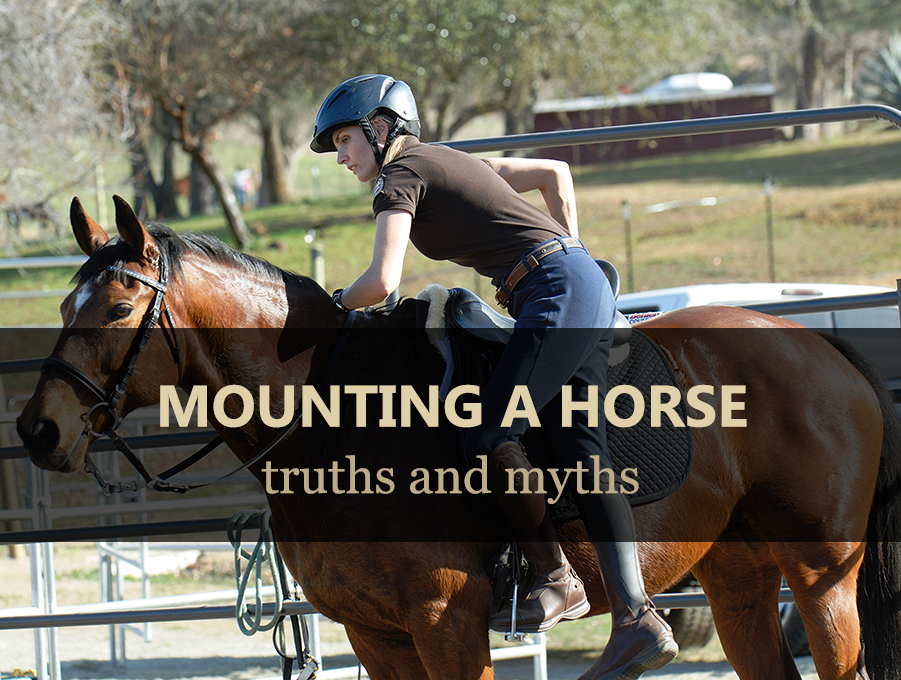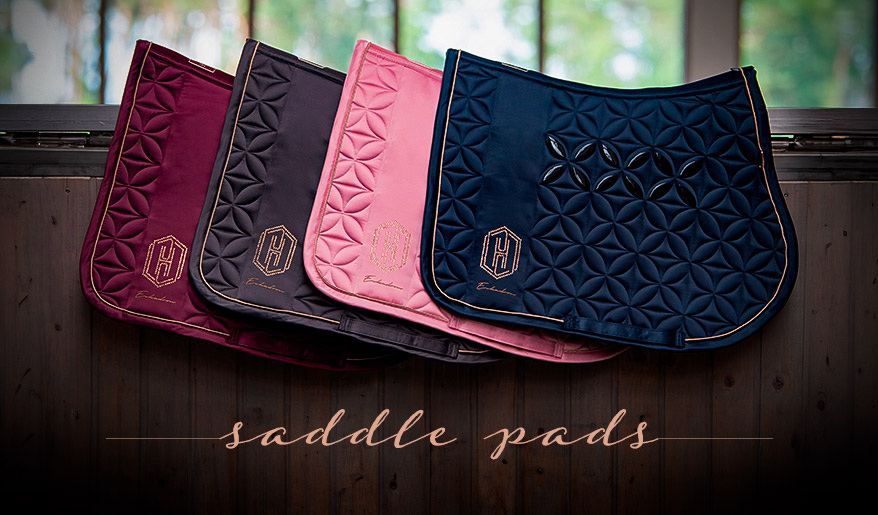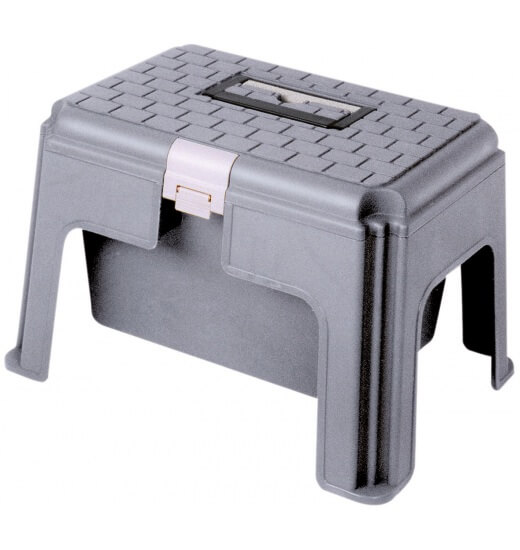source: everythinghorseuk.co.uk
It is said that the whole ride is conditioned by the first walk. And it is somewhat true, because that's when the rules of the whole training, which the horse should obey, are being established. The pace, the consequence of performing tasks, what impulse you choose to communicate will stay with the both of you for the whole ride and later on it would be difficult to change or fix.
This all refers to consistency and building your role as the "leader of the herd" (do not confuse it with a dictator ;)). Such "building" of your image in your horse's eyes starts way before you sit in the saddle. The way you act when you enter a pasture, when you lead your horse, and later - in the stall while you clean him or saddle him up all has enormous influence on your position. Whether you want it or not, your horse will always be testing you a little bit, especially not your own, but the one you ride in a riding center :)
The same applies to mounting. If you don't settle boundaries and you let your horse mince while you're trying to get into the saddle, you cannot expect him to obey your commands while riding.
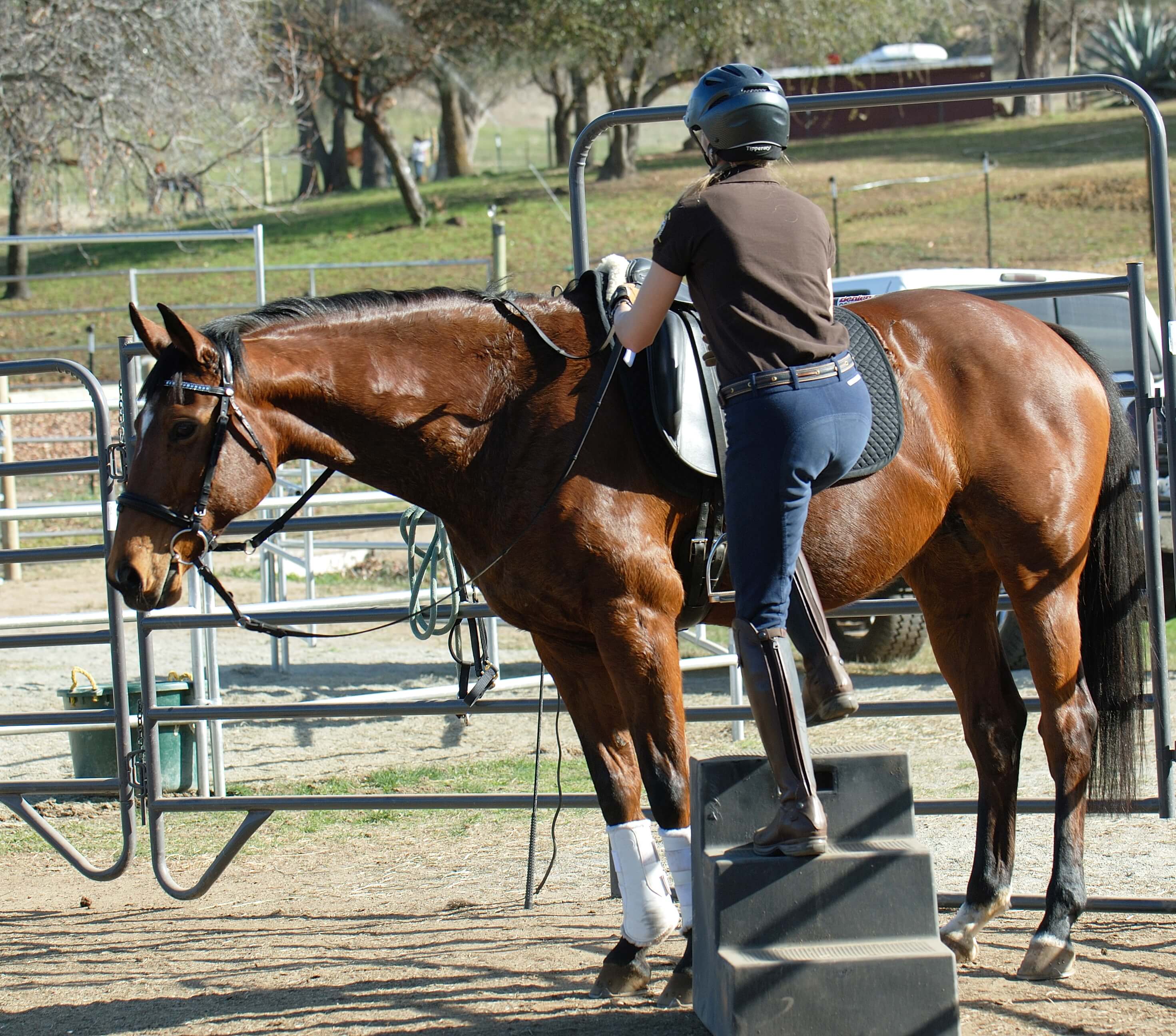
source: ahorseforelinor.wordpress.com
You're trying to set a platform or steps (you can read about benefits of mounting your horse from a platform rather than from the ground HERE), and your horse keeps walking away, mincing and turn his back at you? The moment you put your leg in a stirrup to bounce out of the ground, your horse starts walking? It is the signal to change something!
Situation in which your horse can't stand still while you mount him is something you should not agree to. Riding should be pleasant for the both of you and none of you should start the ride fighting for your life. It's worth to consider what your horse thinks about this whole mounting, if he keeps making it difficult by running away.
Why do horses mince while mounting them?
Many of them have a lot of energy and they just can't wait to start the ride (especially in the field). However, most horses are just not very fond of mounting, especially if you mount them from the ground. This is why it is worth to make sure that this moment is as little unpleasant for the horse as possible.
Maybe you're not using a platform and you overload one side of the horse's body (especially his left shoulder blade, because we usually mount horses from the left side). What is more, many riders drop heavily into the saddle instead of gently sitting on the horse's back. So try to be more mindful and gentle in order to not make this problem even worse.
What is more, the source of the problem might be a wrongly fitted saddle. The horse is just trying to avoid an unpleasant squeeze of the saddle, when he feels pressure on his back. Thus, it is worth investing in equipment that will fit your horse's anatomy, you can use the service of saddle fitting.
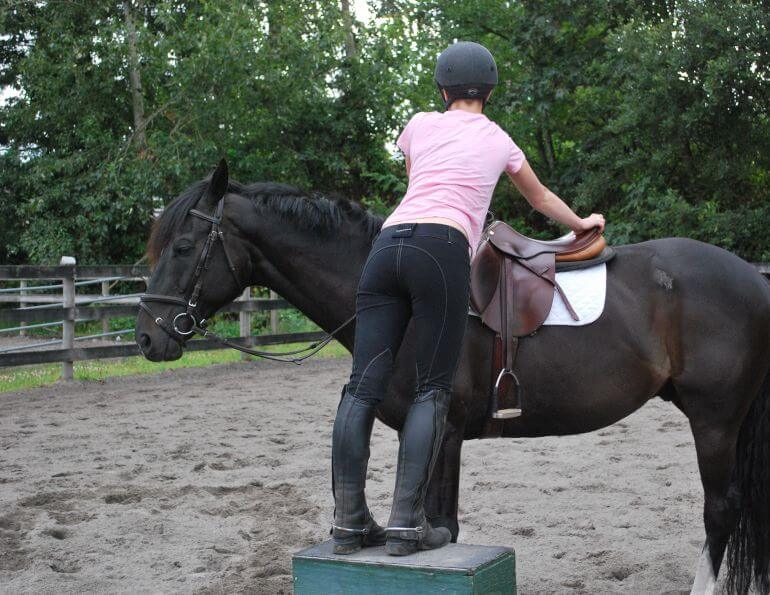
Step by step - how to teach a horse to stand still
How to begin?
Teaching a horse to stand still is 90% working from the ground. For your horse to learn it, he should know some basics while you mount him. That is, obey your commands from the ground - go back while he feels pressure or hears a dressage whip, the same applies to him moving to the sides and forwards. You should also teach him to stay in one place for at least 30 seconds when you tell him to do so, so you can go a few steps away from him, and he doesn't follow you.
It is a bit similar to training a dog - you need to achieve your goal through the technique of little steps, and reward your horse for every positive behavior. A clicker is a good appliance, just like in the case of other animals. Your horse will know that a click means he did good and that he will get a reward. All in all, not a lot changes, because you still give your horse snacks (e.g. carrots) as a reward, but it is much quicker and your horse will know what he's being rewarded for. You take a step back saying "stay" and the horse doesn't move - you click and give him a reward. Then you take two steps back... and so on and so on ;)
The most important in the training process is not to overdo - that means, give your horse time to acquire, repeat some commands every day. Don't try to teach your horse everything at once ;)
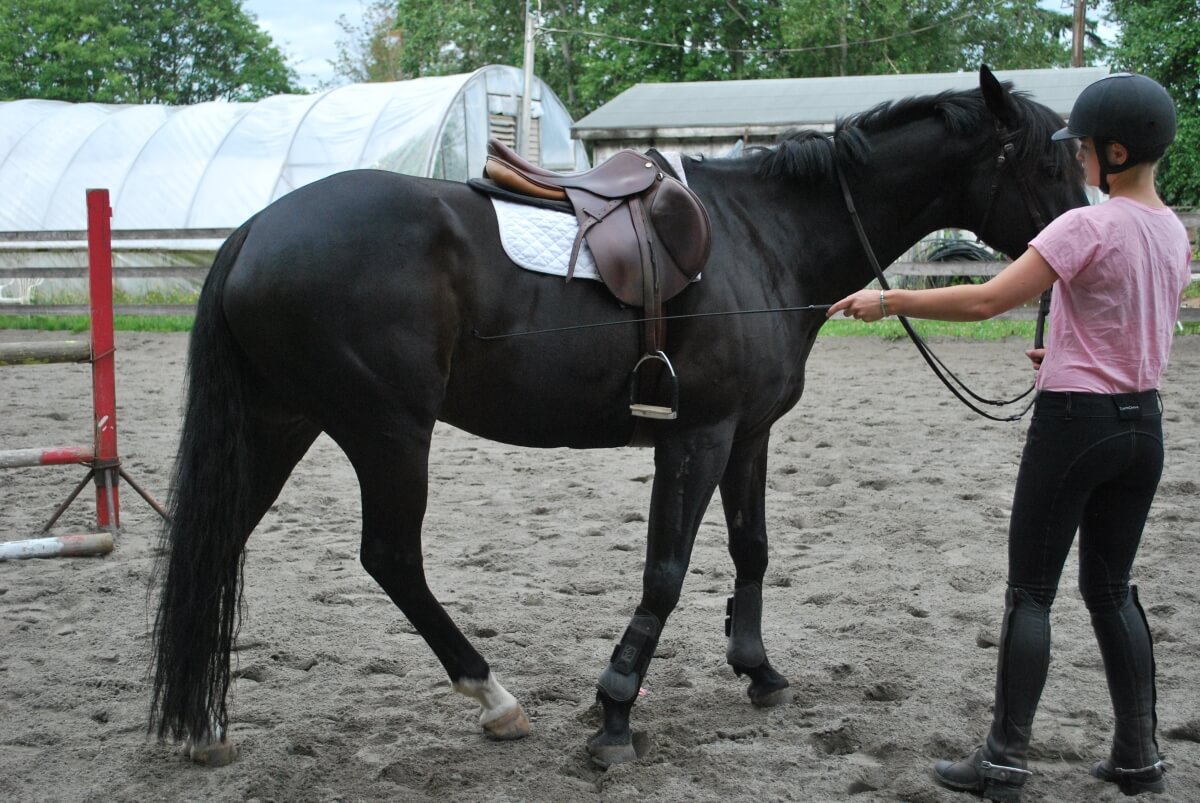
source: horsejournals.com, phot. Jess Hallas Kilcoyne
What next?
Before you start teaching your horse mounting and standing still, you need to get him accustomed to the very fact of the existence of a platform or steps. Many of us forgets that horses are afraid of things they don't know and that suddenly appears by their bellies. Many of us put the stairs heavily by their sides, making noise. That is not helpful.
So start from showing the stairs to your horse. Before you put them anywhere, allow him to smell it thoroughly. Touch his skin with the steps. Repeat the procedure of smelling and touching his side until from the muzzle, through neck, shoulder blade and belly, you put the stairs/platform down slowly. Put the platform everywhere around the horse (but don't start behind his croup at the very beginning) and reward him for every positive reaction. Positive reaction is no reaction. You should do your job and your horse should patiently stand, not fidgeting and not minding the stairs or platform. The easiest to work will be plastic set of stairs - it is light, doesn't make noise and won't hurt your horse even if he bumps into it.
At the end, your horse shouldn't pay attention to the stairs even if you place them underneath his belly or right behind his hinder legs.
Another step is to familiarize your horse with getting on and off the platform and that while you do this, your horse should stay by this platform all the time.
In another phase, with the aid of a dressage whip, you should place your horse by a permanent platform if you have one, or by a fence (who hasn't tried to mount a horse from a fence around the manage?). The horse should stay in one place. That's what the teaching of standing still for 30 seconds was for, so your horse would associate your command "stand" or "stay" (or some other) with standing still and not moving forwards, backward or to the sides. In fact, you keep performing the same exercise, but you make it a bit harder - placing your horse in various places of the manage, by various obstacles and things, not walking away from him, but doing different things around him - standing on a platform, a fence, a block etc.
Let's cut to the chase!
If there is a moment during your training that your horse makes a step forwards, shifts his croup, or moves back instead of standing still, don't worry. Ask him to regain the proper position by using a dressage whip and immediately reward him. Usually the moment of hesitation appears by the next phase - hanging over the saddle.
It all sounds like working with a young horse. And indeed, it is like it. It's just returning to the basics that were once neglected with your horse and now you need to rebuild them.
So if you are on the phase, where your horse can stand still and in one place when you get on a platform, it's time when you can try hanging over the saddle. What does it mean? Instead of putting your left leg into a stirrup and mount your horse, lay on the saddle with your belly and slowly raise your feet from the platform. You can ask somebody for help, so he or she can quickly react and do not allow your horse to move, or to reward your horse if he acts properly. Your helper from the ground should stand in front of the horse, not letting him move forward.
If hanging over the saddle is successful and you horse patiently stands, you can try mounting him while using stirrups, but try to put the most pressure not in a stirrup, but on your hands. Shift most of your body weight on your hands and treat your leg only as a slight support for the foot. Try to sit in the saddle softly, slowly and very gently. A helper from the ground would still be very useful, who would not allow the horse to move after you "land" in the saddle.
Many of us makes another mistake while landing by having completely loose reins. Before you put your foot in a stirrup, hold your reins in a way that they are in contact. That means that they should put a very slight pressure on the horse's muzzle, but not too much, because then they would act backwards and provoke the horse to go back. The left rein will be easy to hold properly, but remember that the right one is an outer one and it cannot be loose either. More than that! It is even more important, because it "opens" the way from the platform for the horse. So if you want to be in control over your horse from the very moment of mounting him, keep your right rein properly (shorten it a bit more than the left one).
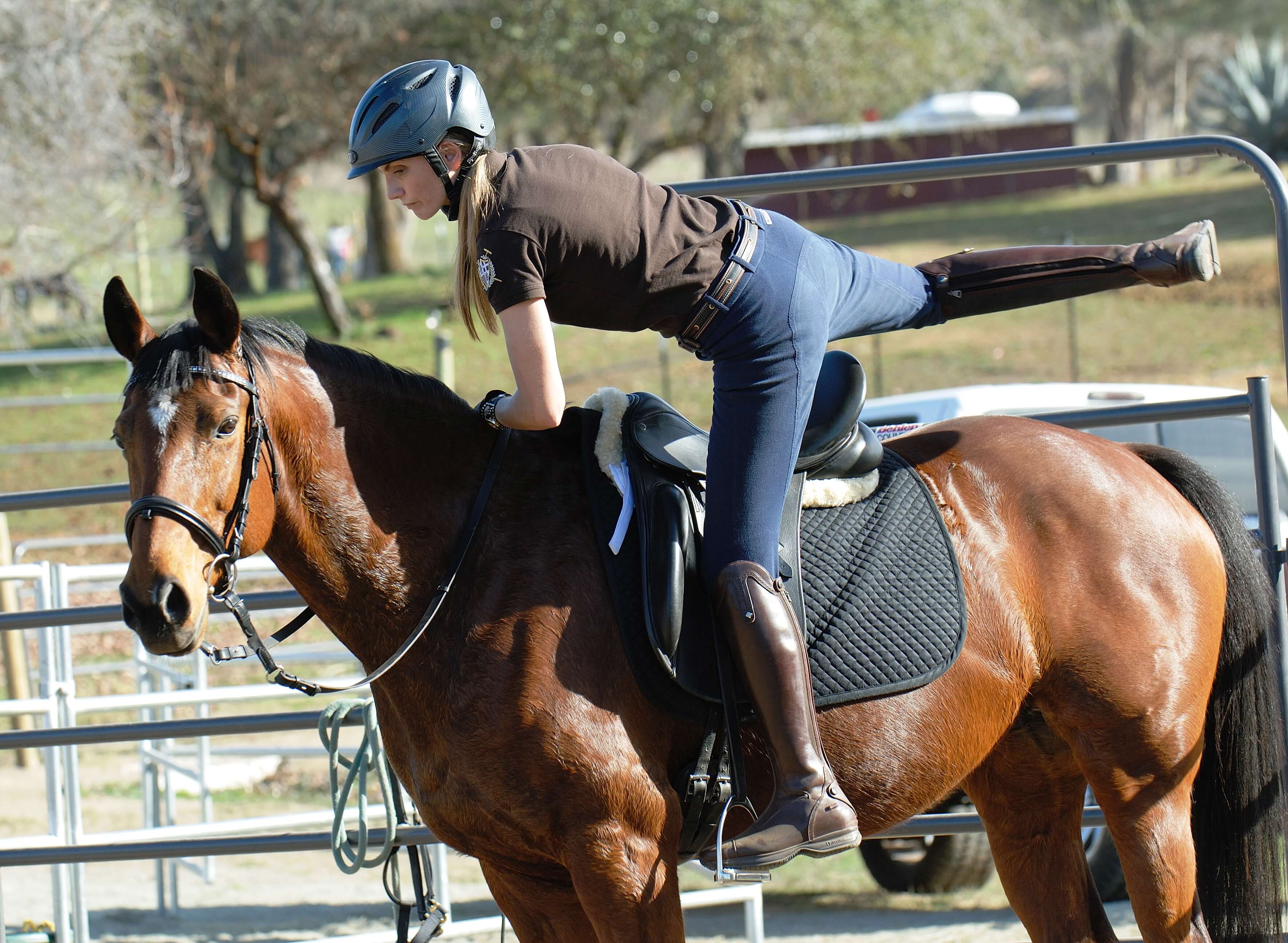
Reins in contact while mounting would be better, source: ahorseforelinor.com
When you have both reins in your left hand, kept in such a way that they are both of proper length, now catch the saddle tree with your left hand as well. With your right hand move a stirrup in such a way that your toes point towards the croup and you move your back slightly to the horse's head. When your foot is in the stirrup, reach your right hand behind the cantle and bounce out of the platform. Try to hitch mainly on your hands directing your center of gravity on the "middle" of the horse, so towards his spine. That should prevent the saddle from shifting or sliding.
If you're sitting in the saddle and your horse is still standing, your helper should reward the horse and repeat the command "stay." The animal shouldn't move until you give him a signal with your calf. Then he can make a step forward and at the same time you should reward him - with your voice, that should be enough ("yes," "bravo"). Stop after a while, praise him again for proper stop and then move again by using your calf and reward the horse with your voice when he moves.
My horse stands still during mounting, but moves the moment I'm in the saddle
It's a common problem of most riders. Usually it stems from:
- The rider falling too heavily into the saddle, which causes the horse to move, because he wants to run away from the rider's weight.
- From inexperienced use of our body, e.g. we catch the horse with a shoe while mounting and he understands it as a signal to go.
- Out of habit - we never demanded him to stand still while mounting, so he is used to the obvious pattern: rider's in the saddle - we go.
In such case, you can use a helper from the ground. First of all, by the well-known command "stay" the helper should remind the horse to stand in one place and reward him for obedience. You, at the same time, can mount his back, being mindful of what you're doing with your body - if you're sending your horse mixed signals. As we mentioned, the helper from the ground should stand in front of the horse. When you're in the saddle, the helper should still keep an eye on the horse so he stands still and repeat the command "stay." When you're ready to go, the helper should move back a couple of steps, repeating the command and giving you way to move. You should vocally reward your horse for standing still and give him a light calf to move. When he does so, reward him with your voice.
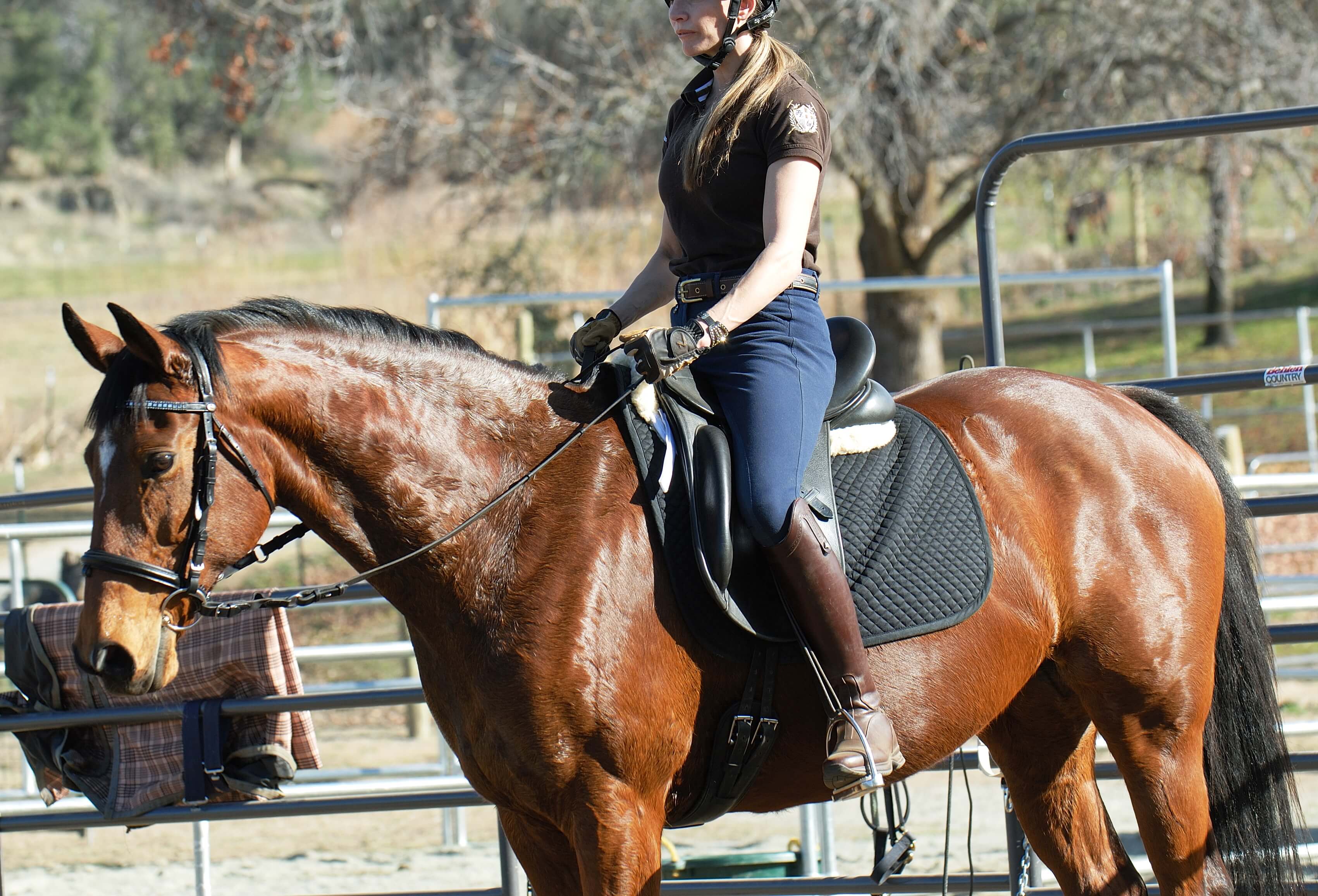
source: ahorseforelinor.com
Another phases are in reality just repeating the same actions. But you should gradually let your helper go until he stops speaking and standing in front of the horse, he or she can just stand nearby. Now you say "stay" while mounting the horse.
The animal will also become more mindful when you practice stops and starts during a ride. You need to be consistent. Many people perform a stop while riding, then gracefully pat the horse for a wonderful stop. The horse starts walking forwards while you're patting him, not waiting for a command to move. Don't allow this to happen! It's better to give up on the patting and reward the horse just with your voice ("yes," "bravo" - calmly, elongating the vowels, which calms the pet) at a properly performed stop and immediately lower the pressure on his muzzle by loosening slightly the reins. It is the best reward which your horse will understand perfectly. Due to proper holding of the reins, you have the chance to hold him if he decides to move before you give him a calf. You hold, wait a couple of seconds, reward him vocally, wait another 2 seconds and then give him a calf to move. After starting with one calf, reward him with your voice again ;)
We hope that are advice will prove useful to you ;)
We recommend to exercise with your horse from the ground and with rewards and a clicker. That improves the communication between the rider and the horse and at the same time is a great fun for both! :)



